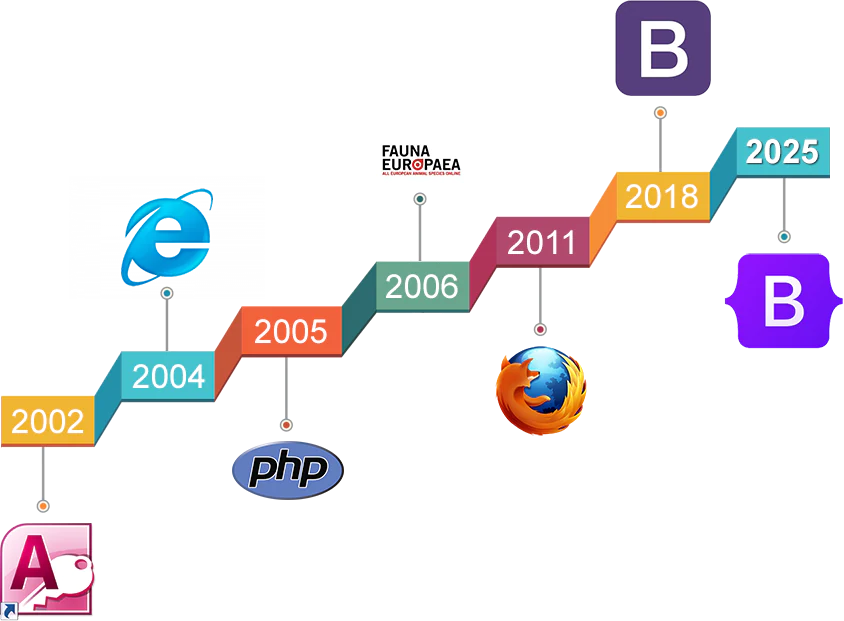 |
|
| 2025 | The third reconstruction of the website. Due to the large size of the database and deteriorating performance, the database was built practically from scratch in a way that ensured maximum performance. The layout of the website was changed, work in responsive mode was improved, all used frameworks and the list of available literature were updated. Many new functionalities were added, including the ability to work with multiple countries at once, precise filtering of observations, data export, and visualization of statistical information. |
| 2018 | The second reconstruction of the website. The ongoing expansion of this website forced a lot of changes in the structure of the database. It was redesigned and created from scratch so that it could be expanded to any extent at any time in the future. The area under consideration was first expanded to take in the whole Palearctic, and now the whole world. Hence, the website is now named Lepidoptera Mundi. |
| 2011 | The website's first reconstruction. After the website had been in operation for a few years, it was equipped with a new user interface, most of the libraries were updated and a few new functions were added. |
| 2006 | The range of species was expanded to Europe. All the species described by Fauna Europaea were included. |
| 2005 | The first version in PHP language. With PHP a range of hitherto inaccessible interactive options became available. The area under consideration was expanded from Poland to Central Europe and the website's name was changed to The Lepidoptera of Central Europe. |
| 2004 | The first Internet version of the database. Created by reconstructing the original version, it enabled static html files to be generated with the names of species. The new website was entitled The Lepidoptera of Poland. |
| 2002 | The first version of the database. Written in MS Access, it contained brief information on the butterflies of Poland, initially created for the personal use. |